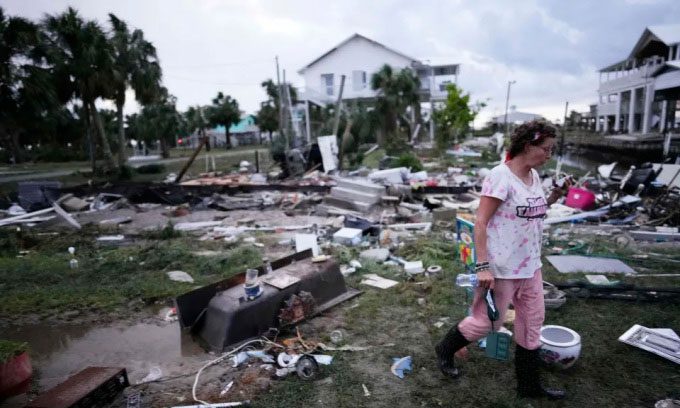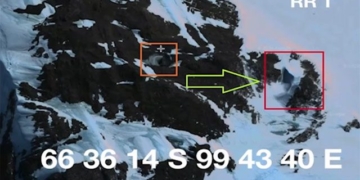In 2023, the number of natural disasters causing damages exceeding $1 billion in the U.S. has reached a record high, reflecting the impact of climate change.
The National Oceanic and Atmospheric Administration (NOAA) announced on September 11 that there have been 23 extreme weather events in the U.S. causing at least $1 billion in damages from January to August this year, surpassing the previous record of 22 events in the entire year of 2020. These disasters have resulted in over $57.6 billion in damages and claimed at least 253 lives, with four months still remaining in the year.

A woman walking among the rubble in Horseshoe Beach, Florida, after Hurricane Idalia passed through on August 30. (Photo: AP/Rebecca Blackwell)
NOAA’s figures do not yet include damages from Tropical Storm Hilary (which made landfall in California) and the severe drought occurring in the South and Midwest, as these costs are still being calculated, according to Adam Smith, an economist and applied climate scientist at NOAA. “We are seeing the traces of climate change across the U.S. I don’t think things will slow down anytime soon,” Smith stated.
NOAA has been monitoring billion-dollar weather disasters in the U.S. since 1980 and adjusts damage costs for inflation. Smith noted that what is happening indicates an increase in disaster occurrences, with more structures being built in high-risk areas. “Exposure, vulnerability, and climate change are exacerbating these disasters, turning them into billion-dollar catastrophes,” he added.
NOAA has had to add 8 billion-dollar disasters to its list since the last update a month ago, including Hurricane Idalia and wildfires in Hawaii. Experts believe that the U.S. must take more action to adapt to the increasing natural disasters, as they will only worsen.
“The climate has changed, while what has been built and the response systems have not kept pace with the change,” remarked Craig Fugate, former director of the Federal Emergency Management Agency.
According to climate scientist Katharine Jacobs at the University of Arizona, the rise in weather disasters aligns with what climate scientists have long predicted, and may be worsened by the natural El Niño phenomenon. Smith once thought the 2020 record would last a long time, but that is no longer the case, and he no longer believes that new records will be enduring.
“Adding more energy to the atmosphere and oceans will increase the intensity and frequency of extreme events. Many events this year are quite unusual, some unprecedented,” Jacobs said.
Climate scientist Chris Field at Stanford University expressed concern over the trend of billion-dollar disasters. “But there are things we can do to reverse this trend. If we want to reduce damages from extreme weather, we need to accelerate efforts to stop climate change and enhance resilience,” he stated.



















































